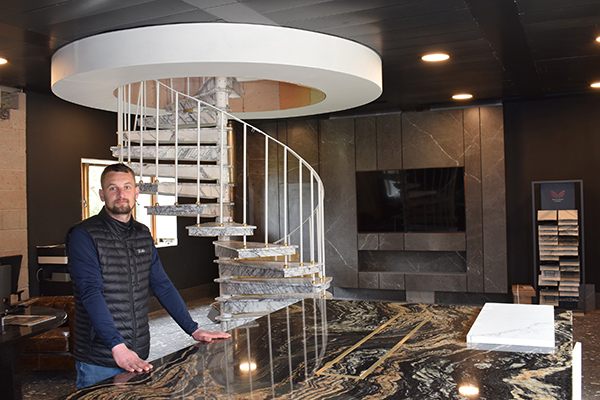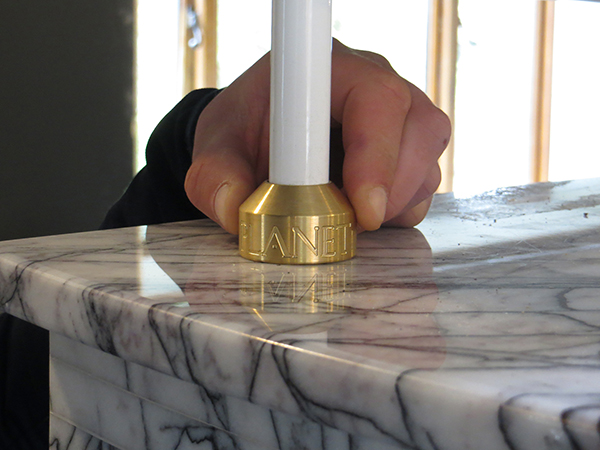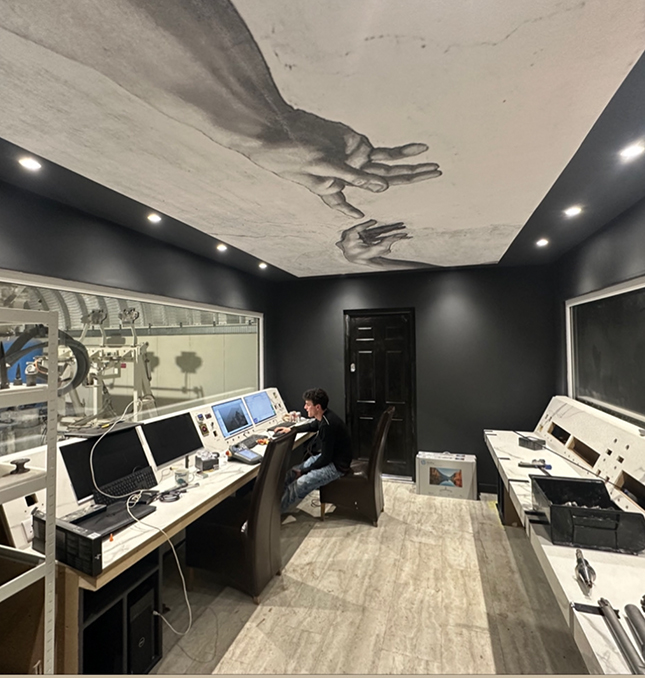It might sound like the title of a science fiction novel but this is the cutting edge of the stone industry in the 21st century at Planet Granite near Coventry.
In a room that wouldn’t look out of place at the Kennedy Space Center, Steve Murphy, of Planet Granite and the new company Planet Sculpture, and his 17-year-old son, Stevie, look out of long windows on either side into workshops where three hefty ABB robots (that they have named Raphael, Michelangelo and Leonardo) are shaping stone.
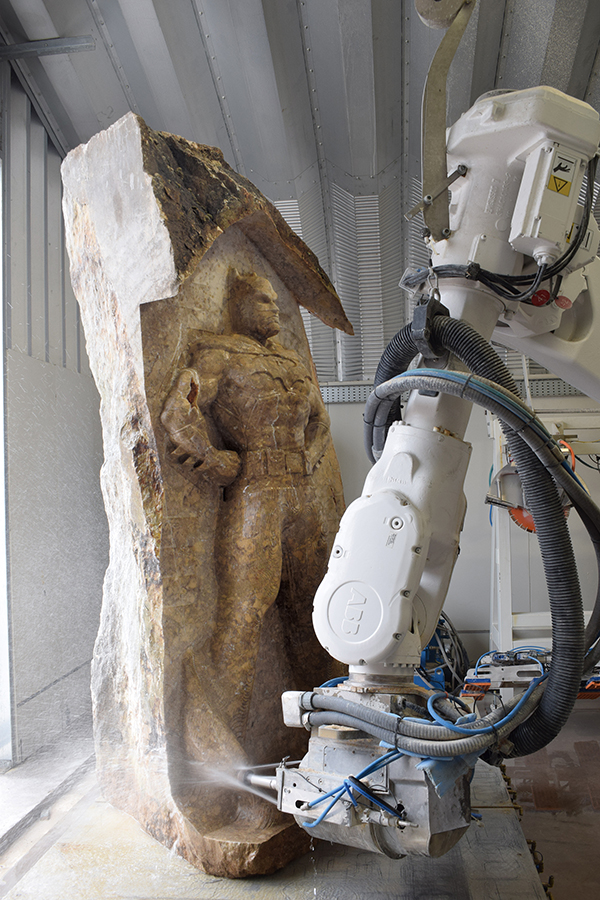
The workshops that house the robots were put up by Steve and Stevie during the Covid restrictions. The control room houses the almost floor-to-ceiling supercomputers that run the robots and isolates the computers and the operators from the work areas.
Steve Murphy is impressed with the way his son has mastered the programs that run the robots – so impressed that he nominated him for an Emerging Talent Award at the Natural Stone Show, which took place at ExCeL London, 6-8 June. Stevie was one of the 10 winners of the Award.
Planet Granite exhibited at the exhibition to explain the capabilities of the robots. Terzago Robotics also exhibited at the Natural Stone Show.
Both Steve and Stevie went to Terzago in Italy for instruction on how to program the robots, although they have had to hone the process of putting it into practice by learning as they go in the Planet Granite workshops.
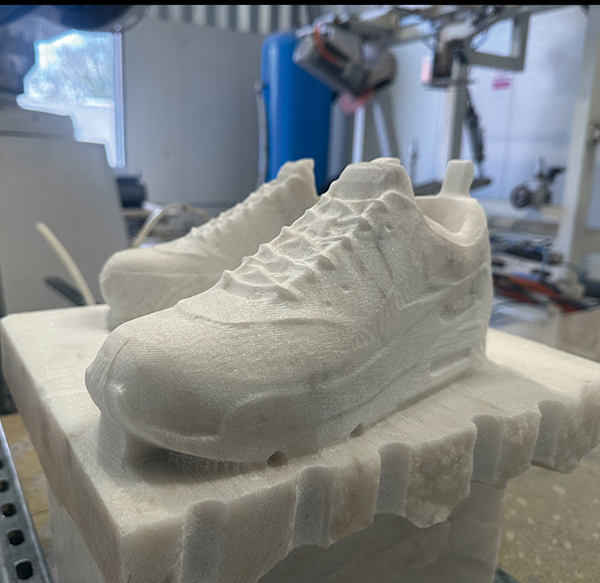
Stevie started studying engineering at the MTC college in Coventry after leaving school but found the pace pedestrian after what he had learnt at Planet Granite, so he has quit to work full time in the family business.
One of the first major stone projects they attempted was cutting the bigger than life-size Batman pictured above into a block of granite that had stood for years outside the Planet Granite showroom a few hundred metres from the workshops. A natural fissure in the stone has left Batman with a dramatic gaping wound in his arm.
The finished sculpture was at the Natural Stone Show and afterwards was put back in front of Planet Granite’s new showroom. More drama has been added by a 100,000 lumin torch shining the Bat sign into the sky at night in the same way as the authorities of Gotham City call Batman when they need his help.
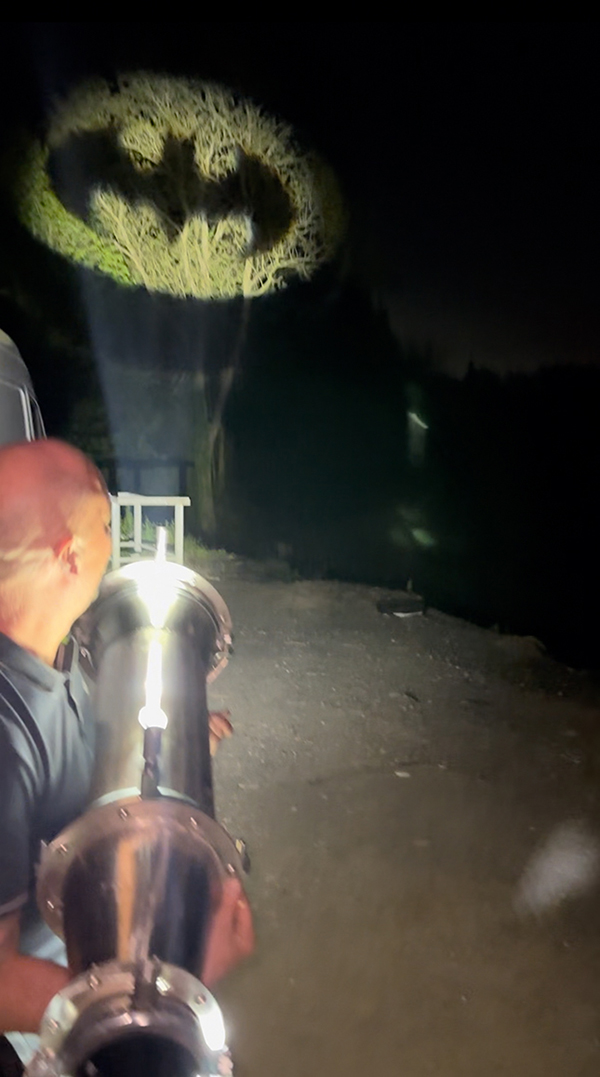
The robots previously belonged to J Rotherham in Yorkshire, which went into administration in 2020. The Administrator was going to be charged for storing the robots and was keen to avoid that expense. As a result, Planet Granite obtained four robots and all the tooling for significantly less than the tooling alone would have cost to buy new. The robots are now being operated as a separate company called Planet Sculpture.
Three of the robots are housed in the workshops either side of the control room, while the fourth is a saw jet on a 10m run – the same saw jet that had been shown at the MarmoMac exhibition in Verona, Italy, with a price tag of €1million. Named Scarlet after Steve’s daughter, it is housed in the workshop next door.
“Rotherham paid £4.7million for all this,” says Steve in his new workshops. “I saw the receipts.” In comparison, he considers the price he paid was a bargain.
Computer-controlled machinery needs to be programmed digitally and the most direct way of gathering digital data from existing objects is to scan them – as many worktop companies have discovered with wire or laser digital templaters.
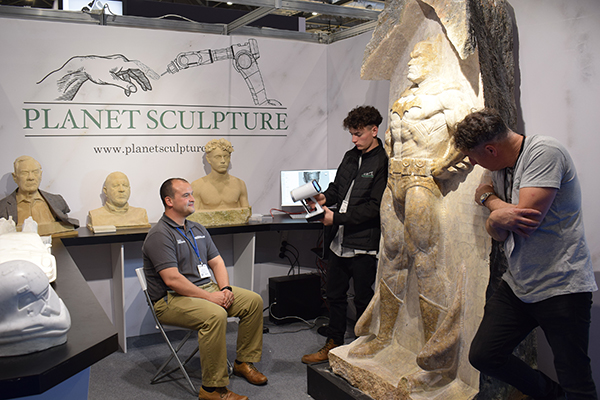
Most of Planet Granite’s business is worktops – and it will continue to be because the robots come under a separate company called Planet Sculpture.
Customers of the robots will be different from those on the worktop side of the business, probably involving artists and designers looking for something made especially for them. To capture digital information for the robots, Steve has a high definition 3D scanner. They cost £35,000 each, but enable 3D scans of solid objects to be transferred to code so the robots can produce a sculpture of the object.
Steve admits there was a fairly steep two-year learning curve to program and use the robots and is grateful to Stevie, his son, for his contribution. “Once he had left college, within six weeks he had sorted everything out here, mostly teaching himself. He’s not a computer geek but he’s good at maths and was interested in physics at school. He ripped everything out and built the control centre. I had had two years of despair. I made mistake after mistake after mistake.”
Taking a punt
Steve admits buying the kit was a punt because although he has CNC machinery, including a waterjet, at Planet Granite, he did not know how to use robots and was not oblivious of the difficulties some people had found with them. “When I bought this kit everyone said I was mad,” he admits.
Initially he had put in a bid for just one of the robots. “I thought maybe I could handle that.” But the Administrator was keen to clear all the robots out to avoid the cost of storing them and accepted what Steve offered for the lot, including nearly £1million-worth of tools.
Steve did not know how he was going to use the robots but felt the technology was sufficiently advanced and interesting to give him an advantage.
Asked now what his customer base is going to be he is frank: “I have no idea.” Which is why he is exhibiting at the Natural Stone Show in London and has also employed a company to make 15-minute podcasts for him to promote the business.
But he is so impressed with what the robots can achieve he believes customers will emerge, on the basis of Ralph Waldo Emerson’s principle that if you build a better mousetrap the world will beat a path to your door to buy it.
In the meantime, he has also been building a new showroom, with more examples of how stone can be used for interiors and a display he designed himself for showing whole slabs of materials to help customers visualise what their homes will look like with it, which is difficult with 50mm square samples. Planet Granite likes people to visit the showroom because when they do they generally become customers.
The showroom is on two floors, joined by a spiral staircase, which demonstrates another aspect of Planet Granite’s skills. And in one of many examples of attention to every detail, it has a banister that is connected to the steps using a fastener engraved with the name of Planet Granite.
